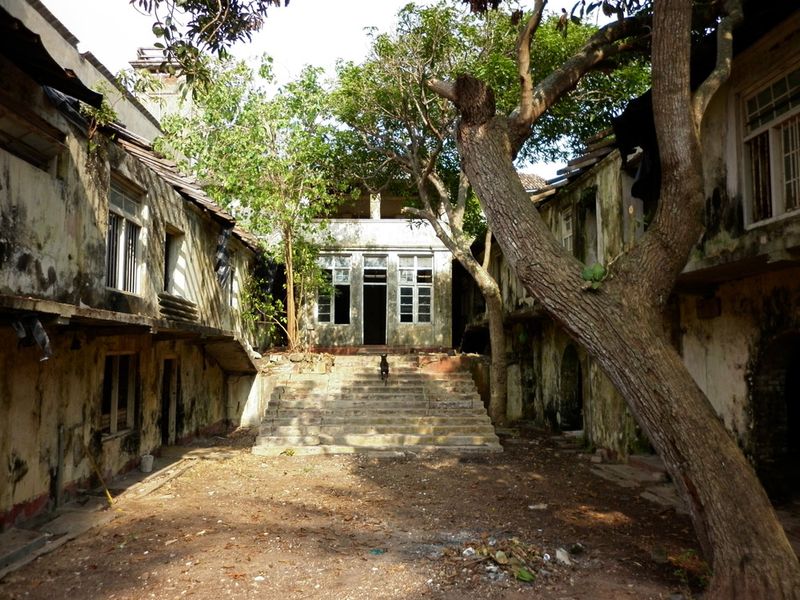My journey with Teardrop Hotels began in 2007, when my partners—Michael Davies, Charlie Austin, Viraj Premasinghe, and I—embarked on a journey to create immersive experiences that connect guests with the soul of Sri Lanka. We set about contemporising centuries-old heritage buildings and vintage tea bungalows with views in distinct regions across the island, and today, our luxury hotels in Sri Lanka are defined by each destination and encourage you to explore, experience, and shape your own Sri Lanka story.
Fort Bazaar, which sits right in the heart of Galle Fort, a UNESCO World Heritage site, is a project that stands as evidence of our passion for transforming remarkable historical properties into contemporary sanctuaries. It stands as a testament to our belief that the small hotel model not only offers unparalleled guest experiences but also honours the island’s notable heritage. Here, in this redefined 17th-century merchant’s home, history and modernity converge to offer an unforgettable retreat from the bustling streets of Galle Fort. We were drawn to Galle Fort because of its unique charm and historical significance. The fort’s narrow cobbled streets, dotted with centuries-old villas, some of which are now turned into cafes, atmospheric churches, and ochre spice warehouses, tell tales of its rich past. We recognised the unique property of this location with its rich cultural heritage that would provide a captivating backdrop for a boutique hotel. Stepping into this carefully restored hotel is like stepping into a living, breathing piece of history where centuries-old walls tell stories of Portuguese, Dutch, and British eras, yet every detail reflects contemporary luxury. This is precisely the vision we had when we embarked on the journey to restore Fort Bazaar. Our goal was to revive and preserve the architectural and cultural essence of Galle Fort while providing a contemporary boutique hotel experience.

The process of restoring Fort Bazaar was both challenging and rewarding. The building itself had been in a state of disrepair, suffering from decades of neglect. Structural issues, weather damage, and general wear and tear posed significant challenges. We even had trees growing out of the coral walls and had to address issues of structural integrity while maintaining the building’s historical features. Our approach was meticulous. We preserved key elements such as the facades, wooden beams, and stone and coral walls, ensuring that the historical essence of the property was retained. The goal was to create a light, airy, and fresh aesthetic suited to the needs of a modern-day traveller.

Our architectural strategy was to seamlessly blend colonial-era elements with contemporary design. We retained key original features like the high ceilings, large windows, and open courtyards, which are characteristics of the period. At the same time, we introduced modern design features such as sleek lines and minimalist aesthetics to create a space that is both timeless and tailored to the needs of today’s travellers. The restoration process involved careful documentation and analysis to ensure there was a balance between the old and the new—the integrity of the historical architecture was maintained while integrating necessary modern amenities. In addition to architectural considerations, interior design played a crucial role in the transformation of Fort Bazaar. This aspect of the project was a collaborative effort between Mike Davies, our interior design consultant, Simone Grace-Colman and I. Our design concept was inspired by the historical narrative of Galle Fort and the rich cultural heritage of Sri Lanka. We aimed to create an environment that evoked the colonial past and is refreshingly modern.

To create an authentic sense of place for guests, we drew on locally sourced materials and employed skilled artisans to craft and design bespoke fixtures, furnishings, and light fittings across the hotel. Local craftsmanship and materials were integral to our design process, ensuring that the interiors reflected the cultural and historical context of the location. Fifteen courtyard-facing rooms and three upper-floor suites are furnished with comfortable four-poster beds and are complemented by modern amenities. We also incorporated elements of the surrounding tropical environment, such as lush greenery and natural light, to enhance the serenity and inviting atmosphere of the hotel.
The challenges we faced during the restoration were substantial. The building’s state required extensive work to restore its structural integrity while preserving its historical character. We needed to balance the introduction of modern amenities with the maintenance of the building’s original architectural features. Sourcing appropriate materials and finding skilled local artisans who could meet our high standards were additional hurdles that we navigated with careful planning and execution. One of the key aspects of the restoration was our collaboration with local artisans, craftsmen, and experts. Their contributions were invaluable in ensuring the authenticity of the project. We worked closely with the archaeology department throughout the project, and local historians and cultural experts provided insights into the historical and cultural context that guided our design decisions. Engaging the local community not only enhanced the project’s authenticity but also fostered a sense of pride and ownership within the community.
Sustainability was another cornerstone of the restoration. We implemented several sustainable practices to minimise the environmental impact of the project. This included the use of energy-efficient lighting and appliances to reduce the property’s carbon footprint. We have implemented water-saving fixtures and practices to minimise water consumption and waste reduction and recycling programs to manage waste responsibly. We also focused on sourcing materials locally to reduce transportation emissions and support the local economy. These efforts reflect our commitment to responsible tourism and environmental stewardship.
Fort Bazaar is more than just a hotel; it is a celebration of Sri Lanka’s rich heritage and a testament to our philosophy at Teardrop Hotels. By preserving and promoting heritage properties, we provide guests with authentic experiences that connect them to the island’s history and culture. Our dedication to sustainability and responsible tourism ensures that each project, including Fort Bazaar, aligns with our broader mission of enriching travel experiences while honouring the past.


